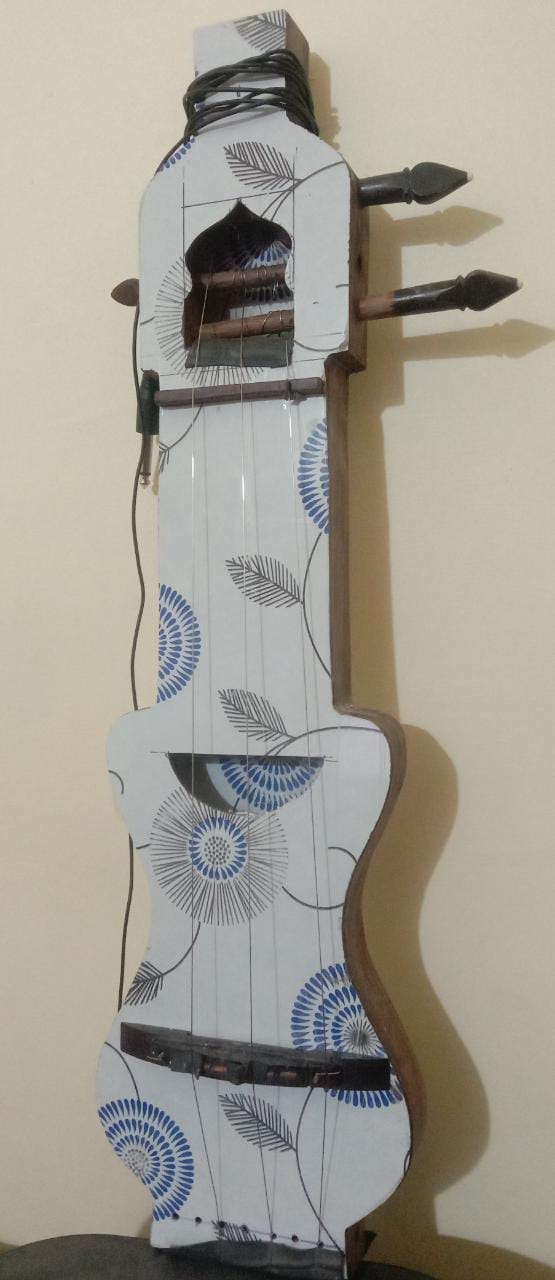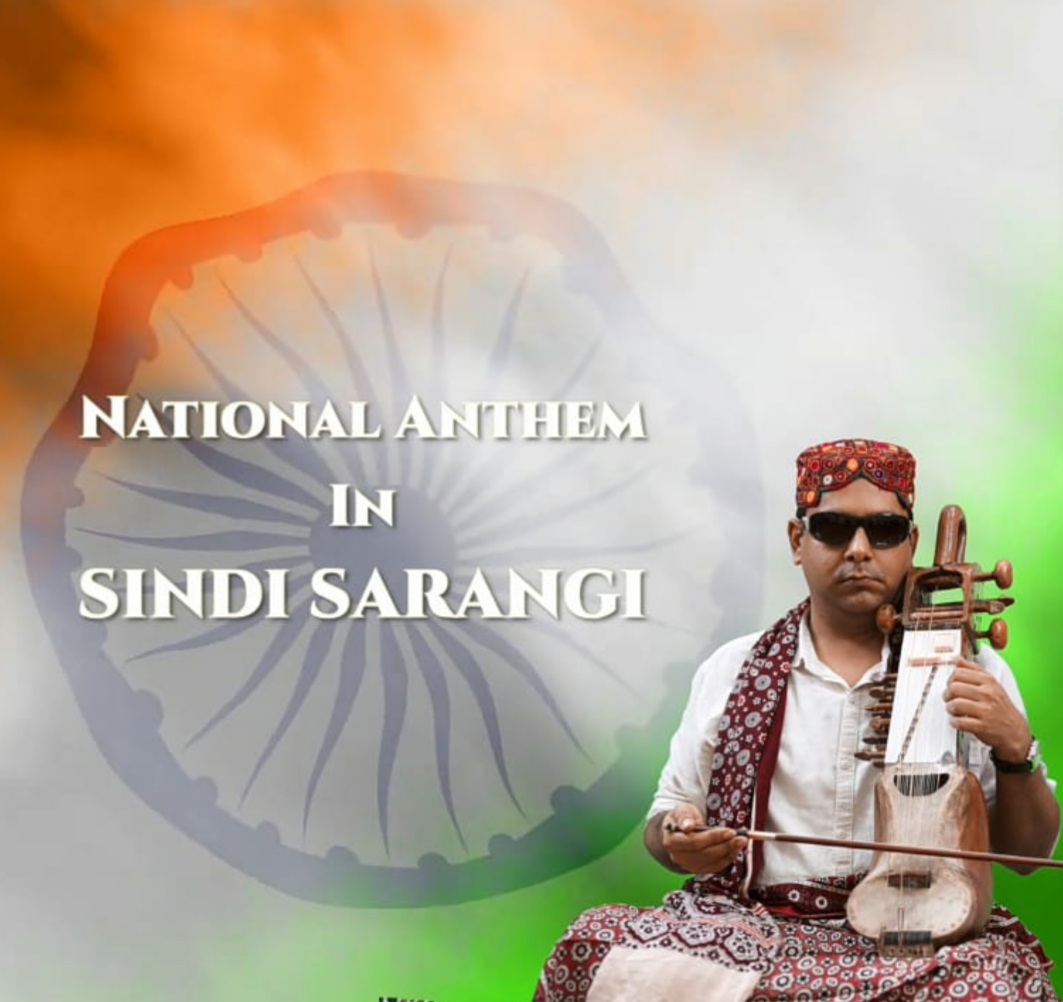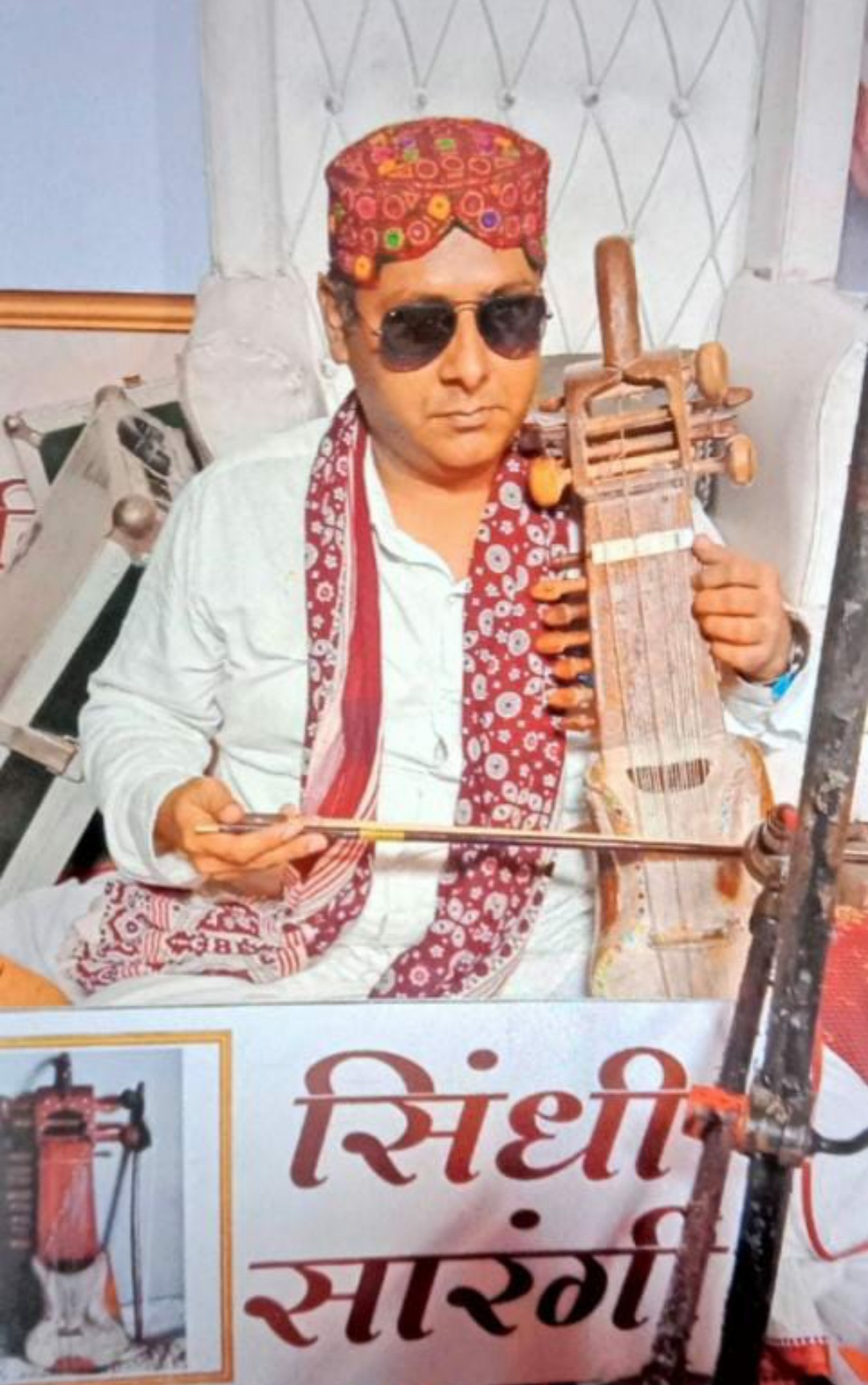13 October 2022 /
RAJESH KUMAR PARSARAMANI
Rajesh Parsaramani, the renowned Sindhi Sarangi Musician who has dedicated his life to the traditional Sindhi Sarangi Music shared his experiences on his newly designed Electric Sindhi Sarangi – APURVA.
Rajesh Parsaramani, the revered torchbearer of Sindhi Sarangi music, has devoted his life to preserving and elevating this soulful tradition.
With the same spirit of reverence and innovation, he now unveils APURVA—his newly designed Electric Sindhi Sarangi, a harmonious blend of heritage and modernity.
Crafted with intuitive ease and capable of producing over 38 distinct melodious tones, APURVA is not merely an instrument but a living archive of Parsaramani’s musical journey.
Through its resonant voice, he invites a new generation to experience the depth, nuance, and timeless beauty of Sindhi classical music in a contemporary form.
RAJESH KUMAR PARSARAMANI, the renowned Sarangi Musician is based in Bilaspur, Chhattisgarh, has been conducting research on this traditional instrument.
He was honored “The World Record of Fastest Sarangi Player” to his credit on 11th February 2021 from Balod (Chhattisgarh), India.
Rajesh Kumar is a renowned visually impaired artist and has played the musical instrument, Sarangi at the speed of 400 BPM (beats per minute) and made a new world record for International Book of Records.
Sindhi Sarangi originated in Sindh from where it spread to other countries and is known in different names as it was introduced in Multan as Multan Sarangi. Presently there are only two Gharanas, the Sindhi Gharana and Multan Gharana.
The history of Sindhi Sarangi dates back 1500 to 2000 years. There used to be Sindhi Gharana (dynasty) of Sindhi Sarangi in olden days but it vanished with passage of time.
“Sindhi Sarangi is a rare musical instrument played in India, Pakistan and Baluch area. In India, Langas and Mangniyar are playing Sindhi Sarangi in Rajasthan area and some artists from Chhattisgarh and Vrindavan conveyed that they are playing Sindhi sarangi. Sindhi Sarangi is a bowed musical instrument having a total 22 to 27 strings. Strings distribution of Sindhi Sarangi is in Baaj, Jeel and Jara.
Earlier Sindhi sarangi was played with the help of three dead goat intestine strings. These strings are called aant ki Taar, nowadays Sindhi Sarangi is played with different kinds of String. Aant ki taar for tuning at kharaj Pancham and Shadaj; metal string as main string tuned at Madhyam shadaj. After the introduction of various mechanical instruments Sindhi Sarangi is still made using the traditional way,” says Rajesh.
“Recently I have designed an electric Sindhi Sarangi with good performance. The major problem with traditional Sindhi Sarangi is with crafting time and high maintenance. The procurement procedure is also very difficult. The Electric Sindhi Sarangi is easy to make and has very little procurement procedure, so artists just have to keep Electric Sindhi Sarangi in a normal cover bag. We also did not find any weather effects in Electric Sarangi. It’s made up of wood and the artist must keep this on a dry surface,” he added.
Many different designs of sindhi sarangi are available and mostly the design of Ustaad Nathu khan from Rahimyar district in Pakistan is widely accepted.
“There was a major challenge that electric Sindhi Sarangi must look like and the performance with other Indian and western musical instruments. I have forwarded the drawings of the new design of the Electric Sarangi to renowned artist Ustaad Lalu Khan of Jaisalmer district and he has completed the wooden work of the new instrument,” he said.
“The Electric Sarangi is named as APURVA. APURVA is very easy to play and can produce more than 38 different melodious sounds. Artists can use any sound modifier equipment, handle easily and can use any bow including that of a violin or Israj bow. I have already applied for the patent of design for this light weight wooden Electric Sindhi Sarangi,” shares Rajesh Parsaramani.
Rajesh Kumar Parasramani who is also the author of a book on Sindhi Sarangi, and has been doing research on the traditional folk instrument which was played by many Sufi musicians, artists in folk festivals and shrines.
Rajesh Kumar has tried to establish ‘Sindhu Gharana’ and plans to write international notations of Sindhi Ragas on Sarangi to promote Sindhi Sarangi in India and abroad, shared his future program.




